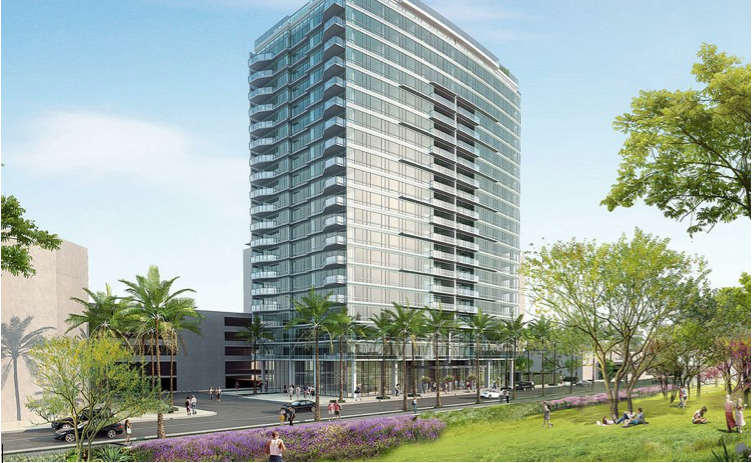CommentsNIMBY ALERT-What the Miracle Mile Residential Association has tried to do is condition the future of our neighborhood on perfection in the present.
No growth can be considered, apparently, until our sewers are sweet-smelling, our streets and sidewalks smooth as pool tables, our police unemployed, our schools all above average, ambulances appear just before accidents, and so on -- an absurd dream palace that Mr. O’Sullivan and his allies know is unattainable.(Graphic above: Rendering of a new apt building scheduled to be finished in 2020)
The MMRA’s position is really aboutexclusion-- demographic and cultural. This obsession was implicit in the Wilshire Community Plan. In the Miracle Mile HPOZ, which was sponsored by the MMRA, it is explicit. The Purple Line Transit Neighborhood Plan is our first opportunity to rectify this ugliness -- and we cannot afford to miss it.
Miracle Mile was founded by a man who saw a farm track running through an oil field and decided it would be one of the most important commercial drags in America. The MMRA has done its best to limitRoss’ vision, and for a generation it has been successful. While numerous less important corridors in Los Angeles have thrived, and Downtown has gone from slum to hub, the only major investment in Wilshire has been the investment the MMRA was unable to stop: County and State.
Apart from the Purple Line and LACMA and the AMPASMuseum, Wilshire has barely changed in 25 years. Some of its most beautiful commercial buildings have gaping vacancies. The retail spaces that aren’t vacant include stationery box stores and uninspiring chain restaurants. Once the home of Los Angeles’ best department stores, Wilshire is a dump.
But it needn’t be. The Purple Line TNP allows us to share a different vision of the future, one packed with outstanding stores and restaurants, side by side with our amazing museums. Trees, pergolas and cafe seating should line wide sidewalks. Where Ross envisioned cars, the Purple Line will bring pedestrians who will stroll rather than cruise. Wilshire should become a true boulevard.
Above all, Miracle Mile should be full of people, many living on Wilshire in new, contemporary multifamily buildings which can rise above and step back from the Deco store fronts, without damaging them or existing multifamily buildings. There is nothing out of scale about tall buildings on Wilshire when the E. Clem Wilson Building stands at 182 feet and 5900 Wilshire at 433 feet -- but what is preventing more is low floor area ratios. These should be increased substantially. The boost from new buildings, new stores and new residents would transform Wilshire.
Councilmembers Koretz, Ryu and Wesson can either join in this vision, or they can stick with the nihilism and exclusion of the past. But if change is allowed, Miracle Mile can once again be a celebration at the heart of our City.
(Henry van Moyland is a resident of Miracle Mile and Co-Founder of Miracle Mile Forward. He is a Board Member of the Mid City West Community Council.) Edited for CityWatch by Linda Abrams.
Tags:














